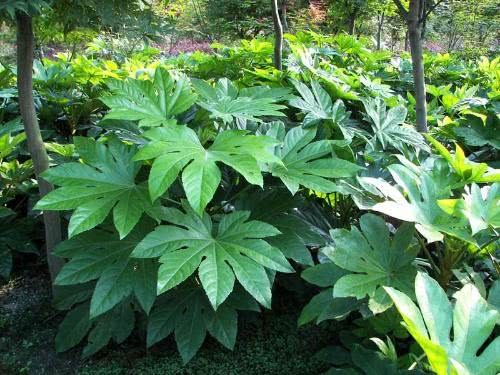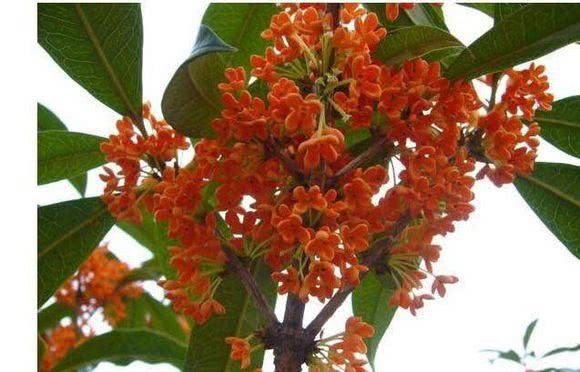Branch leaf pattern multi-star anise gold plate how to plant courtyard fertilization and watering skills?

The alias of star anise gold plate is also known as Jingangzhuo, which is named because there are about eight leaves on its branches, which look the same as the eight horns. Its plant shape is relatively tall, so it is very suitable for cultivation in the courtyard or in a variety of large occasions, such as hotels, clubs or hotels, etc.; in addition, it is also a particularly good choice as a potted ornamental plant, with large leaves and evergreen seasons. It plays an obvious role in indoor decoration or layout.
First, the cultivation of star anise gold plate
There are many ways to plant star anise gold plate, the common ones are ramet, cutting and sowing propagation, of which cutting is the most simple, so in life, people most often use cutting method to plant star anise gold plate. There are two periods of time each year suitable for cutting cultivation of star anise. If you choose to plant it in spring, it is best to plant it in March to April of each year. If it is cultivated in autumn, it is appropriate to choose August to September. Usually in the well-growing star anise plant, choose the more tender cuttings, generally cut in the length of 12-15 cm is appropriate.
When cutting branches, it is not appropriate to use the method of "straight cutting", but to use the method of "oblique cutting". The length of the branch is about 1/3 of the length of the branch, and finally poured in proper water, it can be placed in a semi-shady environment to grow. If the cultivation is carried out in the greenhouse, the temperature can also be controlled at about 18-20 degrees, so that the branches can take root faster, which can be completed in about two to three weeks. Then carry on the suitable cultivation, wait until the seedling grows a few leaves, can carry on the normal management to the potted plant.
II. Maintenance of star anise gold plate
1. Soil requirement
The potted star anise gold plate had better grow in the soil with good water permeability and looseness, and at the same time ensure a high degree of soil fertility, otherwise the plant growth rate is not fast, it will make the plant unable to grow tall. Family potted star anise gold plate generally uses rotten leaf soil or sandy soil-based culture soil, conditional friends, can also put a small amount of peat soil and river sand, fully mixed before use. In addition, the soil needs to be loosened every once in a while, which can prevent the soil from forming plates or hardening.
two。 Lighting requirement
Because the negative resistance of star anise gold plate is very good, it is suitable to grow in semi-overcast environment, but not in the environment with high light intensity for a long time. Because of this, the distinction between summer and winter is very obvious, the summer sun is too strong, so the plant needs most of the shade; while in winter, the temperature is lower, the sun is more suitable for the plant, so it can grow in the sun for a long time.
3. Water condition
Different from the demand for light, star anise gold plate has a relatively high demand for water. Especially in spring and summer, when the star anise plate is growing vigorously, it is usually necessary to keep watering every three days or so, and in the drier summer, it is better to water it every day, preferably in the morning or evening. If the plant is underwatered, its leaves are prone to yellowing and even withering, which has a significant impact on the ornamental of the plant, and it is difficult to change in a short time, so we should pay more attention to the watering of the plant.
4. Fertilization requirements
Star anise plate also needs more nutrients in spring and summer, so it has to be fertilized every half a month or so, but it can be reduced appropriately in summer, because high temperature may cause plants to enter a short dormancy state. Thin fertilizer should be applied every time, otherwise the plant will be burned.
- Prev

It's easy to feed without watering Feiyu flowers to develop bonsai. It's good to blossom and burst pots.
The editor tells you every day that you should care about your flowers, pay attention to your flowers, and be kind to them, otherwise they may not blossom, but the plants brought to you today are different from those before.
- Next

The yellow leaves of sweet-scented osmanthus are difficult to deal with. Note that these three methods are simple and easy to solve.
Sweet-scented osmanthus is a kind of plant with strong fragrance. At ordinary times, sweet-scented osmanthus trees are often seen in the park, and many friends' yards also maintain a small pot of sweet-scented osmanthus, but our sweet-scented osmanthus flowers find yellow leaves.
Related
- Wuhan Hospital Iron Tree Blooming Result Was Instantly Frightened by the Gardener Master
- Which variety of camellia is the most fragrant and best? Which one do you like best?
- What is the small blue coat, the breeding methods and matters needing attention of the succulent plant
- Dormancy time and maintenance management of succulent plants during dormancy
- Minas succulent how to raise, Minas succulent plant pictures
- What are the varieties of winter succulent plants
- How to raise succulent plants in twelve rolls? let's take a look at some experience of breeding twelve rolls.
- Attention should be paid to water control for succulent plants during dormant period (winter and summer)
- Watering experience of twelve rolls of succulent plants
- Techniques for fertilizing succulent plants. An article will let you know how to fertilize succulent plants.

